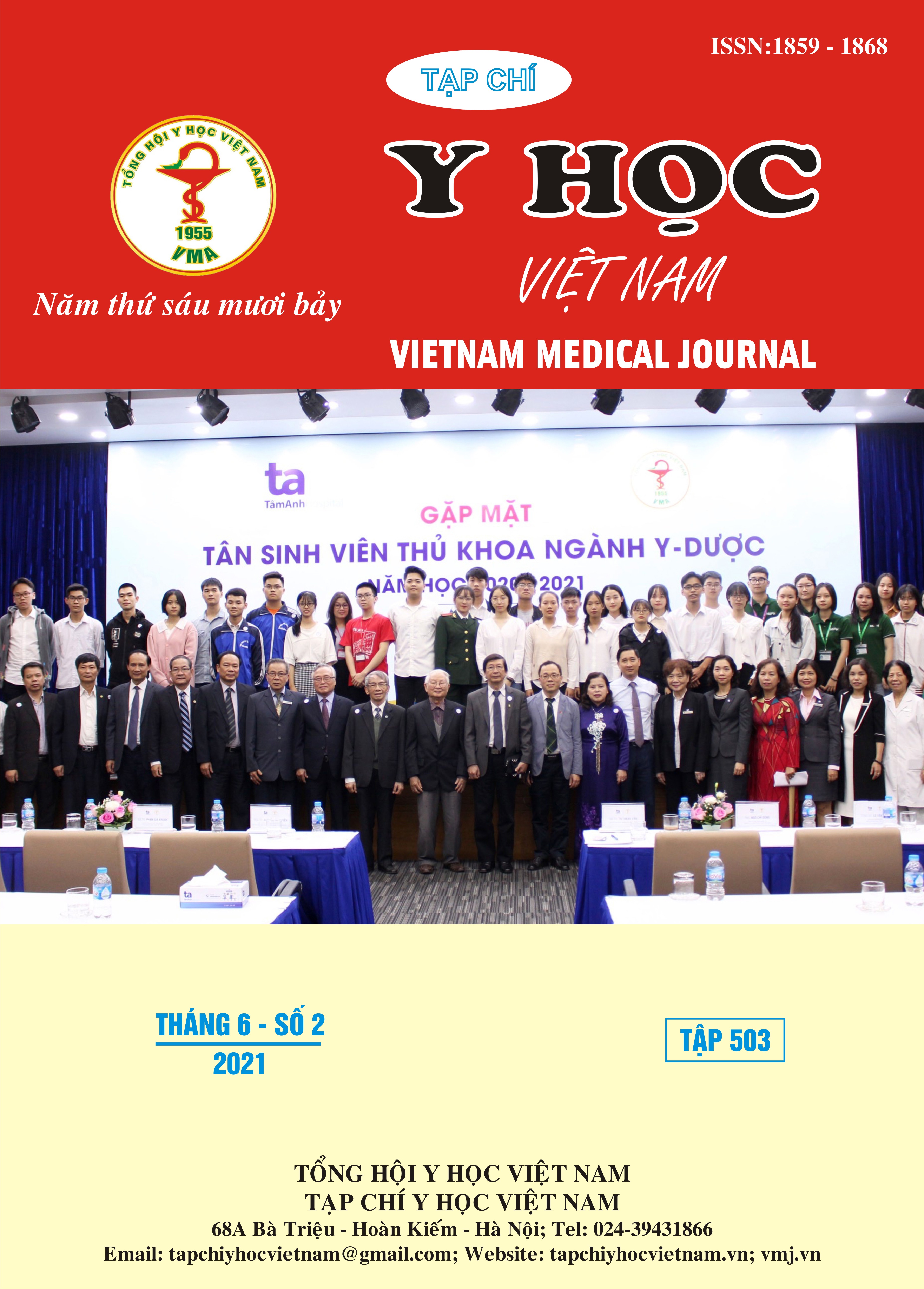MỐI TƯƠNG QUAN GIỮA CÁC THÔNG SỐ BIẾN DẠNG THẤT TRÁI ĐO TRÊN SIÊU ÂM ĐÁNH DẤU MÔ 3D VỚI PHÂN SUẤT TỐNG MÁU THẤT TRÁI Ở BỆNH NHÂN SUY TIM MẠN TÍNH
Nội dung chính của bài viết
Tóm tắt
Mục tiêu: Đánh giá mối tương quan giữa các thông số biến dạng và vận động xoắn thất trái đo trên siêu âm đánh dấu mô 3D với phân suất tống máu thất trái ở bệnh nhân suy tim mạn tính. Đối tượng và phương pháp: Nghiên cứu được thực hiện trên 110 bệnh nhân suy tim mạn tính được điều trị nội trú tại khoa Nội Tim mạch, Bệnh viện TWQĐ 108 từ 01/2018 đến 10/2020. Kết quả: Có mối tương quan chặt chẽ giữa các thông số biến dạng với phân suất tống máu thất trái ( GLS r=0,67; GRS r=0,80, GCS r=0,80; GAS r=0,83 với p <0,001). Tương quan chặt chẽ hơn được thấy trong nhóm suy tim phân suất tống máu giảm so với nhóm suy tim phân suất tống máu bảo tồn (GLS r= 0,62 so với r=0,30, GRS r=0,74 so với r=0,55; GCS r=0,75 so với r=0,63; GAS r= 0,77so với r=0,67). Các thông số biến dạng thất trái tương quan với phân suất tống máu thất trái đo trên 3D mạnh hơn với phân suất tống máu đo trên 2D (GLS r= 0,76 so với r=0,67; GRS r= 0,93 so với r=0,80; GCS r=0,92 so với r=0,80; GAS r=0,94 so với r=0,83). Kết luận: Các thông số biến dạng thất trái có tương quan rất chặt với EF, biến dạng diện tích có tương quan mạnh nhất. Mối tương quan chặt hơn được thấy ở nhóm suy tim phân suất tống máu giảm. Các thông số biến dạng có tương quan với EF đo trên siêu âm 3D mạnh hơn so với EF đo trên siêu âm 2D.
Chi tiết bài viết
Từ khóa
siêu âm 3D, biến dạng thất trái, suy tim
Tài liệu tham khảo
2. Cikes, M. and S.D. Solomon, Beyond ejection fraction: an integrative approach for assessment of cardiac structure and function in heart failure. European heart journal, 2016. 37(21): p. 1642-1650.
3. Muraru, D., et al., Three-dimensional speckle-tracking echocardiography: benefits and limitations of integrating myocardial mechanics with three-dimensional imaging. Cardiovascular diagnosis and therapy, 2018. 8(1): p. 101.
4. Ponikowski, P., et al., 2016 ESC Guidelines for the diagnosis and treatment of acute and chronic heart failure: The Task Force for the diagnosis and treatment of acute and chronic heart failure of the European Society of Cardiology (ESC)Developed with the special contribution of the Heart Failure Association (HFA) of the ESC. European Heart Journal, 2016. 37(27): p. 2129-2200.
5. Figueroa, M.S. and J.I. Peters, Congestive heart failure: diagnosis, pathophysiology, therapy, and implications for respiratory care. Respiratory care, 2006. 51(4): p. 403-412.
6. Kleijn, S.A., et al., Comparison between three-dimensional speckle-tracking echocardiography and cardiac magnetic resonance imaging for quantification of left ventricular volumes and function. European Heart Journal–Cardiovascular Imaging, 2012. 13(10): p. 834-839.
7. Luis, S.A., et al., Use of three-dimensional speckle-tracking echocardiography for quantitative assessment of global left ventricular function: a comparative study to three-dimensional echocardiography. J Am Soc Echocardiogr, 2014. 27(3): p. 285-91.
8. Streeter Jr, D.D., et al., Fiber orientation in the canine left ventricle during diastole and systole. Circulation research, 1969. 24(3): p. 339-347.
9. Matsumoto, K., et al., Contractile reserve assessed by three-dimensional global circumferential strain as a predictor of cardiovascular events in patients with idiopathic dilated cardiomyopathy. Journal of the American Society of Echocardiography, 2012. 25(12): p. 1299-1308.


